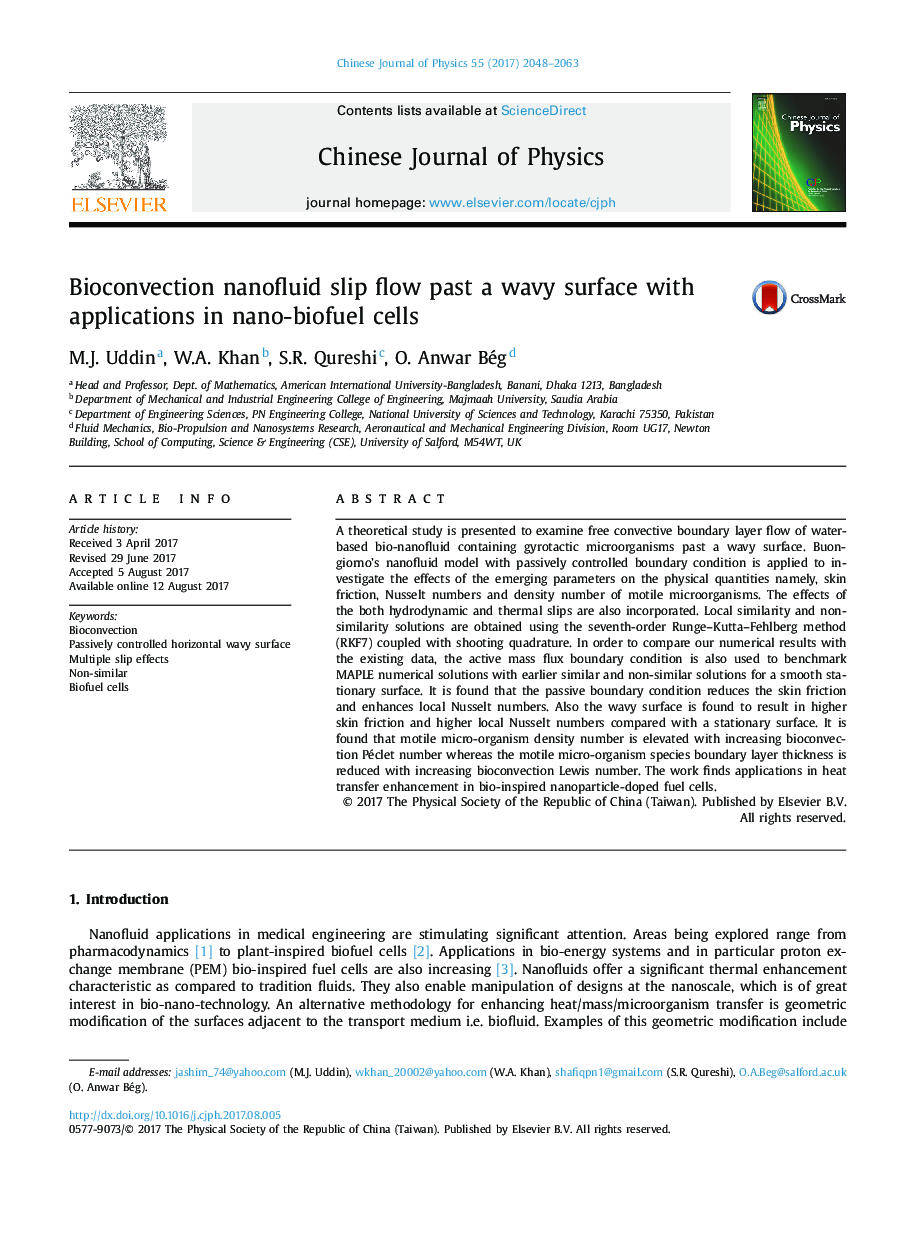| کد مقاله | کد نشریه | سال انتشار | مقاله انگلیسی | نسخه تمام متن |
|---|---|---|---|---|
| 5488372 | 1524070 | 2017 | 16 صفحه PDF | دانلود رایگان |

- A non-similar solution of bio-nanofluids is investigated along a horizontal wavy surface.
- Zero mass flux and slip boundary condition are employed.
- The Runge-Kutta-Fehlberg method of seventh order coupled with a shooting method is used.
- Outcome is applicable in heat transfer enhancement in bio-inspired nanoparticle-doped fuel cells.
A theoretical study is presented to examine free convective boundary layer flow of water-based bio-nanofluid containing gyrotactic microorganisms past a wavy surface. Buongiorno's nanofluid model with passively controlled boundary condition is applied to investigate the effects of the emerging parameters on the physical quantities namely, skin friction, Nusselt numbers and density number of motile microorganisms. The effects of the both hydrodynamic and thermal slips are also incorporated. Local similarity and non-similarity solutions are obtained using the seventh-order Runge-Kutta-Fehlberg method (RKF7) coupled with shooting quadrature. In order to compare our numerical results with the existing data, the active mass flux boundary condition is also used to benchmark MAPLE numerical solutions with earlier similar and non-similar solutions for a smooth stationary surface. It is found that the passive boundary condition reduces the skin friction and enhances local Nusselt numbers. Also the wavy surface is found to result in higher skin friction and higher local Nusselt numbers compared with a stationary surface. It is found that motile micro-organism density number is elevated with increasing bioconvection Péclet number whereas the motile micro-organism species boundary layer thickness is reduced with increasing bioconvection Lewis number. The work finds applications in heat transfer enhancement in bio-inspired nanoparticle-doped fuel cells.
Journal: Chinese Journal of Physics - Volume 55, Issue 5, October 2017, Pages 2048-2063